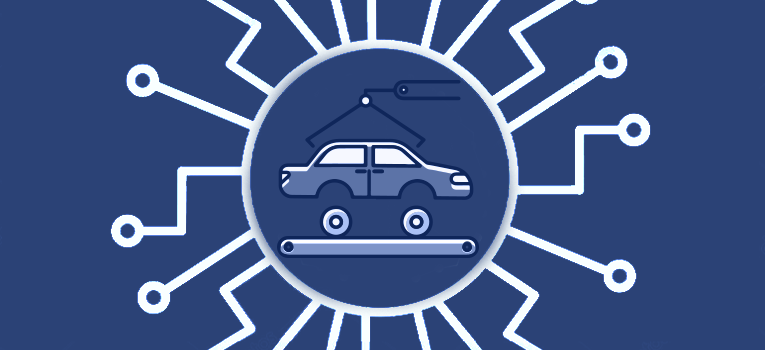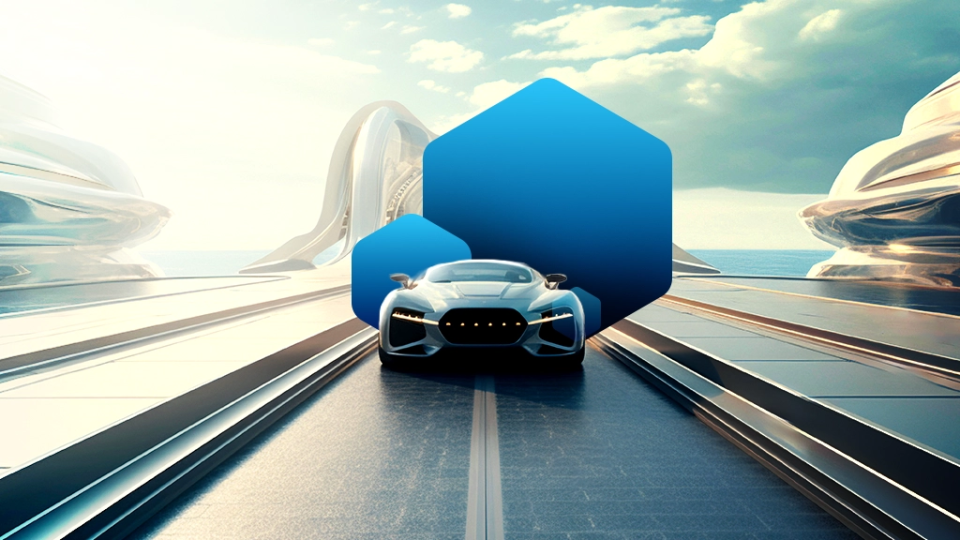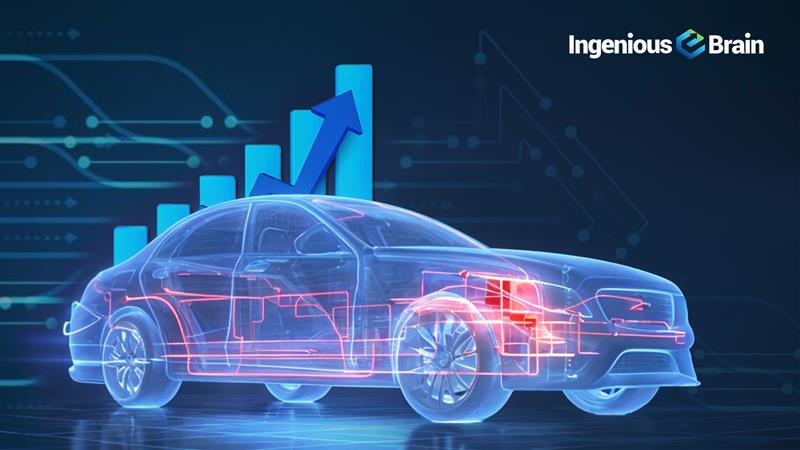Can we imagine a day without riding our vehicle or hoping for some other kind of vehicle? In our luxurious lifestyle, the Automotive Industry is one of the essentials of human lives. The automotive industry evolves with trends and discoveries. AI is implemented rapidly in various sectors, and the way it is used in the automotive industry is a hot-button issue right now. A recent study shows that AI will transform the devices we are using, and cars are at the top of the list.
Artificial intelligence is creating a significant impact on how cars are manufactured. Artificial intelligence is creating an influential impact on how cars are manufactured and well-equipped with AI systems to manage traffic in the cities and the passenger and driver’s comfort and well-being. Here’s how.
Artificial Intelligence Influencing the Automotive Industry
In 1981, car manufacturing engineers installed the Engine Control Unit (ECU) in a vehicle leading to plenty of development opportunities we are exploring. With this, the other transitional change arrives with the BMW introducing network connectivity in cars. The top key players using AI in the automotive industry use the below-mentioned technologies.
- Driver assistants: At CES 2018, Hyundai motor company launched Hyundai’s next-generation hydrogen-powered fuel cell electric vehicle equipped with new Advanced Driver Assistance System (ADAS) technology. AI-based driver plays an essential role in navigation, safety measures, and preventing emergencies, thereby happening on the road. It can also monitor the driver’s behavior if he has fallen asleep.
- Autopilot driving: The idea of the self-driving car is not new. It’s the rapid development in machine learning and artificial intelligence, making it possible from “ridiculous fantasy” to “an inevitable reality.” The two leaders here are Waymo which used to be a part of Google, and Tesla.
- Intelligent talking cars: they are equipped with AI, which can have conversations back and forth with passengers. It demonstrates the Toyotas “Learn, Protect, Inspire” philosophy. The Concept-i artificial intelligence system, nicknamed “Yui,” learns about its driver by listening to conversations, monitoring social media activity and schedules, and analyzing facial expressions and driving habits to sense when a driver might be sleepy or stressed or what might enhance the driver’s comfort and then adjusts lighting, music or to the seats accordingly.
- Audi Fit Driver: The Audi Fit Driver is based on the empathic vehicle that recognizes the driver’s current state and status and responds accordingly, whether tense or exhausted. Audi Fit Driver calculates the driver’s condition using vehicle sensors and wearables such as smartwatches and fitness bands. Audi Fit Driver works with learning algorithms that adapt precisely to the individual. If the system notices that the driver is tense, it could offer him relaxing breathing exercises or a stress-relieving massage. If, for example, the driver loses consciousness or suffers a heart attack, a piloted emergency stop is initiated, and an alarm is sent to the emergency services.
- Energizing systems: The ambition of Mercedes-Benz is a car that helps to promote the well-being of its passengers. ENERGIZING comfort control networks various comfort systems in the vehicle and uses lighting and musical moods plus several massages for a wide range of wellness programs. The ENERGIZING COACH recommends programs according to the situation. ENERGIZING seat kinetics also benefits driver fitness. The system supports advantageous changes in the seating posture through minute movements of the seat cushion and backrest when on a journey.
- Smartphone as a brain: Honda, in collaboration with Drivemode, developed the “Smartphone as Brain” technology, which provides drivers and motorcycles with a secure and easy way to incorporate their smartphones into driving and driving while limiting distractions. For example, riders can use Bluetooth® to attach their mobile and motorcycle to manage their phone by either steering handle switches or voice recognition. Honda works with Softbank to create an AI technology that could converse with a driver and use sensors and cameras “to perceive the emotions of the driver and to engage in dialogue based on the vehicle’s own emotions.” The NeuV seems to be Honda’s first effort to include the technology inside a vehicle.
Recent Advancements in the Automotive Industry for the Well-Being and Comfort of Humans
In the automotive industry, AI provides drivers or passengers solutions for relieving stress, discomfort, anxiety, and drowsiness, maintaining temperature, humidity, weather, and climate, and improving visualizations. The AI technologies used are machine learning, deep learning, neural networks, facial recognition, bayesian networks, fuzzy logic, and classification algorithms. Here are some solutions offered by companies that have been commercialized-
- Activating self-driving if the driver lacks attentiveness (ZF Friedrichshafen AG): Based on a predetermined emotion or a lack of attentiveness of the vehicle user, recognized by the artificial intelligence, the vehicle user is notified of the emotion or the lack of attentiveness recognized, and the self-drive unit can be activated.
- Preventing distracted driving (GM Global Tech Operations LLC): A distracted driving elimination system includes an image capture device within a passenger compartment of an automobile, capturing the first hand and the second hand of a vehicle operator and a steering wheel. An analysis unit has geometry and visual characteristics of multiple predetermined items saved in memory. The analysis unit receives the images and compares the images to the predetermined items saved in the memory to identify if any one of the first-hand or the second-hand of the vehicle operator is not in direct contact with the steering and is in direct contact with one of the predetermined items thereby initiating a distracted driving event.
- Predicting and enhancing driver’s comfort (Lear Corp): A processor that analyzes the vehicle data and the user data using artificial intelligence (AI) logic to generate a comfort prediction for the user
- Transmitting notifications for emotional activities and reducing distractions (Harman International Industries Inc): The NCS analyzes and predicts the driver’s cognitive and emotional load and estimates the driver’s cognitive and emotional impact potentially caused by any incoming notifications.
- Machine learning improves a Leanable vehicle’s performance (Yamaha): Improving a leanable vehicle’s performance by calculating the driver’s behavior. The system also includes a computing module to use the sensor data in combination with data from the leanable vehicle interface to calculate the driver behavior to produce a future desired performance, such as the desired aggressiveness and a future position, so that the performance of the leanable vehicle is optimized.
- Determining and improving comfort (HERE GLOBAL BV): Determines a comfort level, a discomfort level, or a user’s combination based on the reaction. A heart rate sensor is configured to detect a heart rate, a change in the heart rate. A camera sensor is configured to detect facial movement, eye movement, a body movement.
- Machine learning responding to drivers’ moods: The technology uses a driver-facing camera and biometric sensing to monitor and evaluate the driver’s mood and adapt a host of cabin features, including the heating, ventilation, air conditioning system, media, and ambient lighting. Jaguar Land Rover is developing new AI technology to better understand changes in the driver’s mood while behind the wheel.
- Audio alerts for drowsy and yawning drivers: Amazon is testing cameras equipped with artificial intelligence to monitor delivery drivers while they are working. The cameras can also detect yawning, instructing the driver to pull over for 15 minutes. If the driver does not comply, they receive a call from their delivery service partner program with another command.
- Detecting handoff conditions and providing relaxation with massage and favorite songs (Volkswagen AG): This can monitor the driver’s posture and alert him if he seems distracted or tired. Based on the data, the vehicle can estimate the driver’s condition and energize or relax them accordingly.
- Driver’s movements to determine driver’s attention (BOSCH): Can be used to recognize the driver’s state or behavior, e.g., attention and drowsiness.
- Intelligent massaging seats: Safety and comfort remain priorities for auto manufacturers, but advances in ergonomics and biomechanics have offered designers new possibilities for seat function – aided and abetted by advanced electronics and computing power. Recaro introduced a massage seat designed to improve comfort on long-haul trips. The system works with air chambers on two levels in the backrest to support the upper body’s spinal and postural muscles. Three massage settings are available in five degrees of intensity – ‘Active,’ ‘Intensive,’ and ‘Wellness’ modes.
- Drowsiness, stress, emotion, distraction, and Gesture recognition (Emotion 3D): Emotion3D’s in-cabin analysis software makes driving safer and enables next-level user experience.Emotion3D offers state-of-the-art computer vision and machine learning software for image-based analysis of in-cabin environments.
Different solutions are being provided by different automotive companies for the well-being and comfort of human beings like intelligent massaging seats, activating self-driving detecting drowsiness, detection of drivers’ mood, etc. There are so many other solutions under the pre-commercialization stage that will make the entry into the market. It includes:
- The car will activate the DAYLIGHT+ system, bringing more light into the dark truck cab in the winter to counteract a possible seasonal affective disorder (SAD). This will not only increase drivers’ feelings of well-being but also ensure their safety.
- The car will know your driving habits and the roads traveled so far and tell your emotional experience during the ride.
- This car can make driving less stressful and automatically maneuver through difficult areas for drivers.
Future Perspective:
The automotive industry is constantly changing and evolving, and now it has started embracing artificial intelligence and data analytics for the daily process to stay ahead of the curve. Automotive industries are doing out of the box to meet customers’ needs and provide comfort and well-being. Recently, NIO partnered with NVIDIA to develop a new generation of automated driving electric vehicles. EV models featuring NIO Adam Supercomputer powered by NVIDIA DRIVE Orin to begin production in 2022. By 2025, the Volkswagen Group plans to invest around $32.7 billion in digitalization and increase the proportion of in-house developed software in the car to 60% from 10% today. Volkswagen Group teams up with Microsoft to accelerate the development of automated driving. Hyundai Motor and Apple plan to sign a partnership deal on autonomous electric cars by March and start production around 2024 in the United States.



